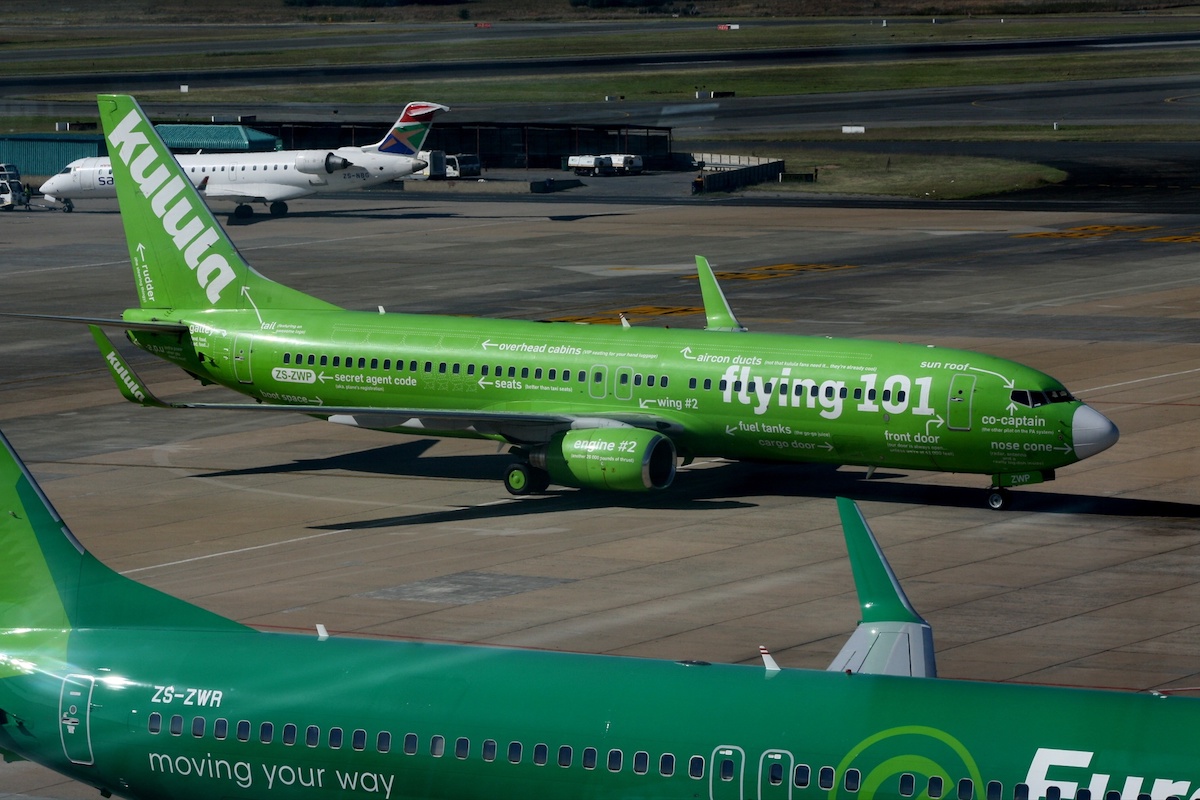South Africa's Airline Market Resets After Comair Failure

Photo Credit: Flickr / Bob Adams
South Africa is getting a dramatic post-pandemic makeover with the closure of Comair, the country's second-biggest airline.
Lawyers for the airline, which had suspended flights on May 31, moved to liquidate the company on June 9. They cited an inability to secure funding to keep Comair flying and the fallout from Covid-19 travel restrictions for the move. Comair operated both a British Airways franchise in South Africa, and the discount brand Kulula.
"This development is really unfortunate especially at the time when we are making progress in terms of the recovery," South Africa's Minister of Tourism Lindiwe Sisulu said in a statement. "This essentially results in a limited distribution network where there is limited capacity for both domestic and international travelers."
Comair flew almost 32 percent of seats, including both its British Airways and Kulula operations, in South Africa in May, according to Cirium schedule data. Safair operated 42 percent of seats, Airlink 16 percent, and state-owned South African Airways and its partner Cemair 7 percent.
According to Sisulu, Comair had a 40 percent share of domestic air travelers in South Africa. The country is the continent's largest airline market.
In any market, the immediate loss of a third of airline seats is a blow. Seldom do competitors have the ability to quickly replace the lost capacity, which can result in higher airfares. The situation is exacerbated in South Africa where the market is still recovering from the pandemic, and South African Airways remains smaller than it was, due to its own financial struggles.
The Airports Company South Africa, which operates nine airports in the country including the three busiest, Cape Town, Durban, and Johannesburg, handled 2.6 million passengers in April, company data show. That was the highest number since February 2020, and showed a near steady improvement since last August. However, April traffic was still 28 percent below 2019 levels.
"The removal of [Comair's] capacity will undoubtedly be missed, especially at times of peak demand," Airlink CEO Rodger Foster said in an email. "The surviving domestic airlines will undoubtedly see the opportunity to increase capacity to address the gap. Without sounding insensitive, Airlink is investigating ways in which it may be able to share in the supply of the capacity shortfall."
Foster added that Comair's closure was a "sad day in the history of South African aviation," and that it highlights "the incredible difficulties confronting airlines" in Southern Africa.
Airlink, which flew as an affiliate of South African Airways until just before the pandemic, has grown out of the pandemic. The airline's capacity increased at a compound quarterly rate of almost 37 percent from the second quarter of 2020 through the third quarter of 2022, Cirium data show. Some of that increase is attributable to the resumption of aircraft parked early in the pandemic, and the shift of flying from its former franchise operation to its own branded operation.
And Airlink has signed new international partnerships with Emirates — the largest foreign carrier flying to South Africa — and United Airlines in the past year. The latter is growing rapidly to South Africa to fill the gap left by South African Airways' exit from U.S. routes.
South African Airways interim CEO John Lamola said on June 2, two days after Comair suspended flights, that the airline would add capacity between Cape Town, Durban, and Johannesburg. The state-owned airline is limited in what it can do following significant reductions in its fleet and workforce during the pandemic.
A Safair spokesperson was not available for comment.
